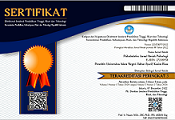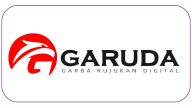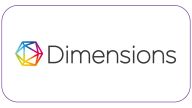Work Engagement: Peran Learning Agility pada Karyawan
Abstract
Work engagement merupakan salah satu faktor kunci yang memengaruhi kinerja dan produktivitas karyawan dalam organisasi. Tingkat keterlibatan kerja yang tinggi mencerminkan motivasi, dedikasi, dan komitmen individu terhadap tugas-tugas yang diemban. Dalam konteks ini, learning agility—kemampuan individu untuk belajar dari pengalaman dan beradaptasi dengan cepat terhadap perubahan—berperan penting dalam mendukung keterlibatan kerja. Penelitian ini bertujuan untuk mengeksplorasi hubungan antara learning agility dan work engagement pada karyawan. Sebanyak 240 karyawan berusia 19 – 27 tahun dengan minimal kerja selama 1 tahun menjadi pastisipan penelitian. Convenient sampling digunakan untuk memilih subjek penelitian. Skala Work Engagement digunakan untuk mengukur variabel work engagement dan Skala Learning Agility digunakan untuk mengukur variabel learning agility. Data penelitian dianalisis menggunakan analisis Spearman-rank dan Mann-Whitney U Test. Adapun Hasil menunjukkan learning agility memiliki hubungan positif dengan work engagement pada karyawan. Hasil analisis tambahan menunjukkan bahwa work engagement lebih tinggi pada karyawan laki-laki dibanding perempuan, lebih tinggi pada karyawan berpendidikan SMA dibandingkan dengan yang berpendidikan kuliah, serta lebih tinggi pada karyawan dengan masa kerja dua tahun dibandingkan dengan yang baru bekerja satu tahun. Hasil penelitian ini dapat menjadi acuan perusahaan dalam menciptakan lingkungan kerja yang mendukung pembelajaran, inovasi, dan pengelolaan tantangan agar dapat meningkatkan work engagement pada karyawan.
Full Text:
PDFReferences
Bakker, A.B., Schaufeli, W.B., Leiter, M.P., & Taris, T.W. (2010). Work engagement: an emerging concept in occupational psychology. Work and Stress Journal, 22(3), 187−200
Baudewijns, C., Gerards, R., & Grip, A. (2015). New ways of working and work engagement. Netherlands: The Netherlands Maastricht University.
Bielawska, A, Z., Gil A.U., &, Lis, A.M. (2022). Quantitative research in economics and management sciences. Poland: Cognitione Foundation for the Dissemination of Knowledge and Science.
Bowles, B., & Cooper, C.L. (2012). The high engagement work culture: Balancing me and we. London: Palgrave Macmillan.
Burke, W.W. (2017). Organization change: theory and practice. US: SAGE Publications.
Dale Carnegie Indonesia. (2017). Hanya 25 persen millenials yang setia kepada perusahaan. Diakses 24 Maret 2024 dari https://www.dalecarnegie.id/sumberd aya/media/media-coverage/hanya-25-persen-millennials-yang-setia-kepadaperusahaan/
Dillman, D. A., Smyth, J. D., & Christian, L. M. (2014). Internet, Phone, Mail, and Mixed-Mode Surveys: The Tailored Design Method. Wiley.
Etikan, I., Musa, S. A., & Alkassim, R. S. (2016). Comparison of convenience sampling and purposive sampling. American Journal of Theoretical and Applied Statistics, 5(1), 1-4.
Evans, J. R., & Mathur, A. (2005). The value of online surveys. Internet Research, 15(2), 195–219.
Field, A. (2013). Discovering Statistics Using IBM SPSS Statistics (4th ed.). Sage Publications.
Gagne, M. (2014). The oxford handbook of work engagement, motivation, and self-determination theory. UK: Oxford University Press
Ghasemi, A., & Zahediasl, S. (2012). Normality tests for statistical analysis: A guide for non-statisticians. International Journal of Endocrinology and Metabolism, 10(2), 486–489.
Gill, D.S. (2007). Employee selection and work engagement: Do recruitment and selection practices influence work engagement. US: Kansas State University.
Göker, S.D. (2021). A closer look at organizational culture in action. UK: IntechOpen
Gravett, L. S., & Caldwell, S. A. (2016). Learning agility: the impact on recruitment and retention. In learning agility: the impact on recruitment and retention. New York: Springer Nature.
Hadi, S. (2015). Metodologi riset. Yogyakarta: Pustaka Pelajar.
Hakanen, J.J., Ropponen, A., Schaufeli, W.B., & Witte, H.D. (2019). Who is engaged at work. JOEM, 61(5), 373-381.
Hewson, C., Vogel, C., & Laurent, D. (2016). Internet research methods (2nd Edition). Sage Publications Inc.
Hoff, D.F., & Burke, W.W. (2017). Learning agility. US: Hogan Assessments
Holbeche. L. (2022). Aligning human resources and business strategy. New York: Routledge.
Harter, J. (2022). Disengagement persists among U.S. employees. Diakses tanggal 24 Oktober 2024 dari https://www.gallup.com/workplace/391922/employee-engagement-slump-continues.aspx
In, J.H., & Sesilia, S. (2018). The effect of learning agility on organizational citizenship behavior: Focused on the mediating effects of work engagement. Journal of Lifelong Education and HRD, 14(1):139-173
Jo, Y., & Hong, A.J. (2022). Impact of agile learning on innovative behavior: a moderated mediation model of employee engagement and perceived organizational support. Diakses tanggal 24 September 2023 dari https://www.frontiersin.org/articles/10.3389/fpsyg.2022.900830/full
Miley, M. (2020). How does learning agility affect a sales workforce in an it multinational. Ireland: Dublin City University.
Muchtadin. (2023). Pengaruh learning agility dan kepuasan kerja terhadap work engagement pengemudi ojek online grab. Jurnal Ekonomi Dan Bisnis, 1(2), 172 – 181.
Nayak, J. K., & Narayan, K. A. (2019). Strengths and weaknesses of online surveys. Journal of Humanities and Social Science, 24(5), 31–38.
Noach, R.M., Batilmurik, R.W., Bowakh, B.A.W., & Suy, O.M.J. (2023). The role of organizational support in moderating the influence of learning agility on employee performance. The International Journal of Social Sciences World, 5(1), 21-28.
Orlando, B. (2020). Strategy and behaviors in the digital econom. UK: IntechOpen
Saputra, N., Abdinagoro, S.B., & Kuncoro, E.A. (2018). The mediating role of learning agility on the relationship between work engagement and learning culture. Social Sciences & Humanities, 26 (1), 117 – 130.
Simbula, S., & Guglielmi, D. (2013). I am engaged, i feel good, and i go the extramile: Relationships between work enggagement and consequences. Jurnal of Work Organizational Psychology,2(29), 117-125
Schaufeli, W., & Bakker, A. (2004). Uwes, utrecht work engagement scale preliminary manual version 1.1. Netherland: Occupational Health Psychology Unit Utrecht University.
Supraktiknya, A. (2014). Teknik Penyusunan Instrumen Penelitian dan Validitasnya. Pustaka Pelajar.
Qin, Y. (2020). Globalizing IR theory: Critical engagement. US: Taylor & Francis.
Tress, A, (2017). The effect of empowering leadership on work engagement in an organizational change environment: an investigation of the mediating roles of self-efficacy and self-esteem. US: Anchor Academic Publishing.
Verburg, S. (2023). True leaders engage employees. Diakses 20 April 2024
https://ocdalecarnegie.com/true-leaders-engage-employees/
DOI: http://dx.doi.org/10.24014/pib.v6i2.35950
Refbacks
- There are currently no refbacks.
Redaksi Psikobuletin: Buletin Ilmiah Psikologi
Publisher: Universitas Islam Negeri Sultan Syarif Kasim Riau
Jl. H.R. Soebrantas Km. 15.5 No. 155 Gedung Fakultas Psikologi UIN Sultan Syarif Kasim Riau Kel. Tuahmadani Kec. Tampan Pekanbaru - Riau 28293.
E-mail : psikobuletin@uin-suska.ac.id / Website :http://ejournal.uin-suska.ac.id/index.php/Psikobuletin
Psikobuletin : Buletin Ilmiah Psikologi by Fakultas Psikologi is licensed under a Creative Commons Attribution 4.0 International License.



31.png)





